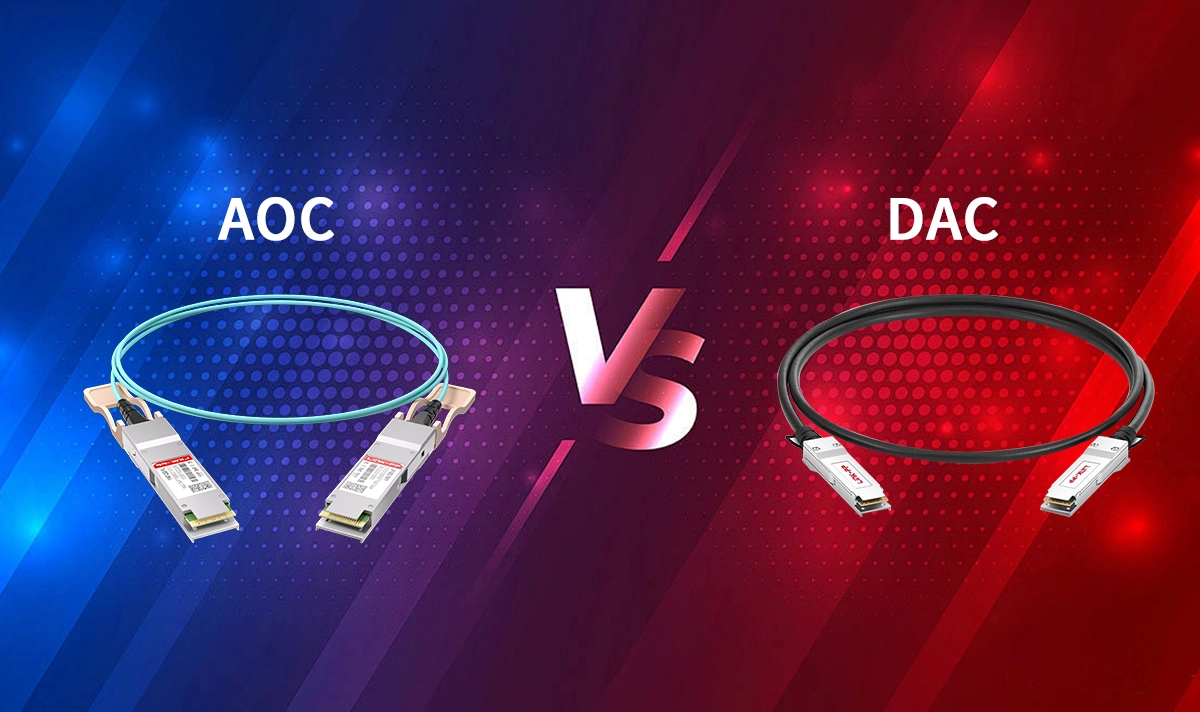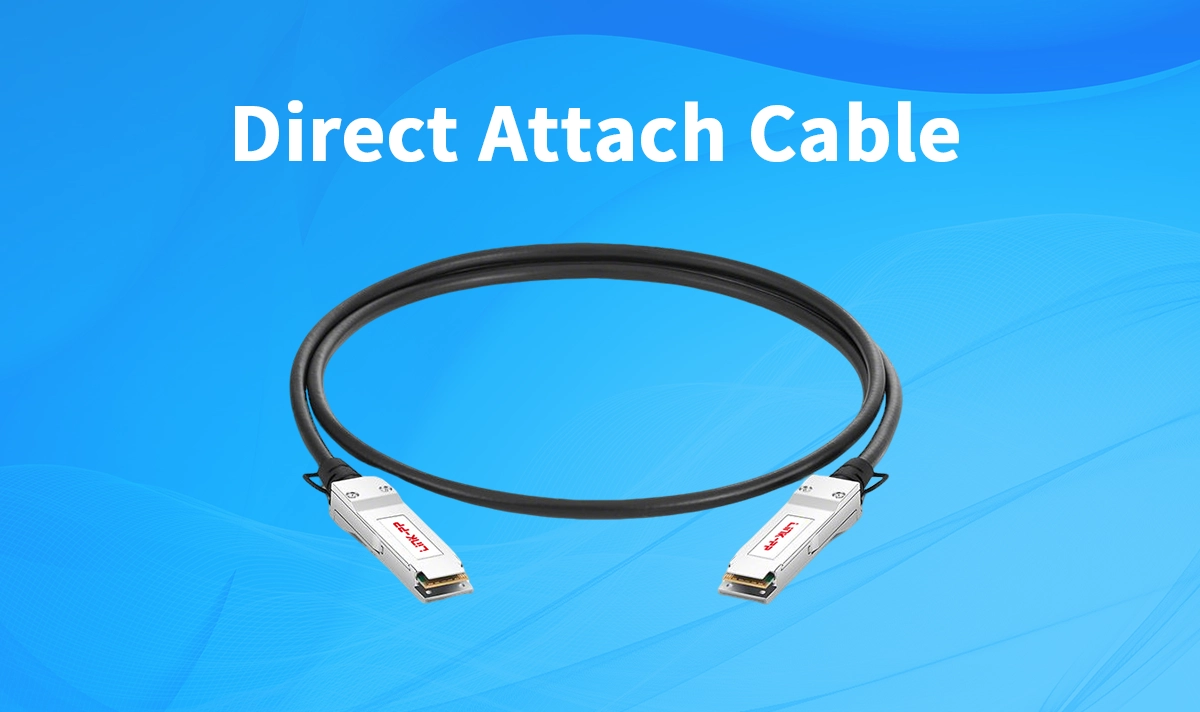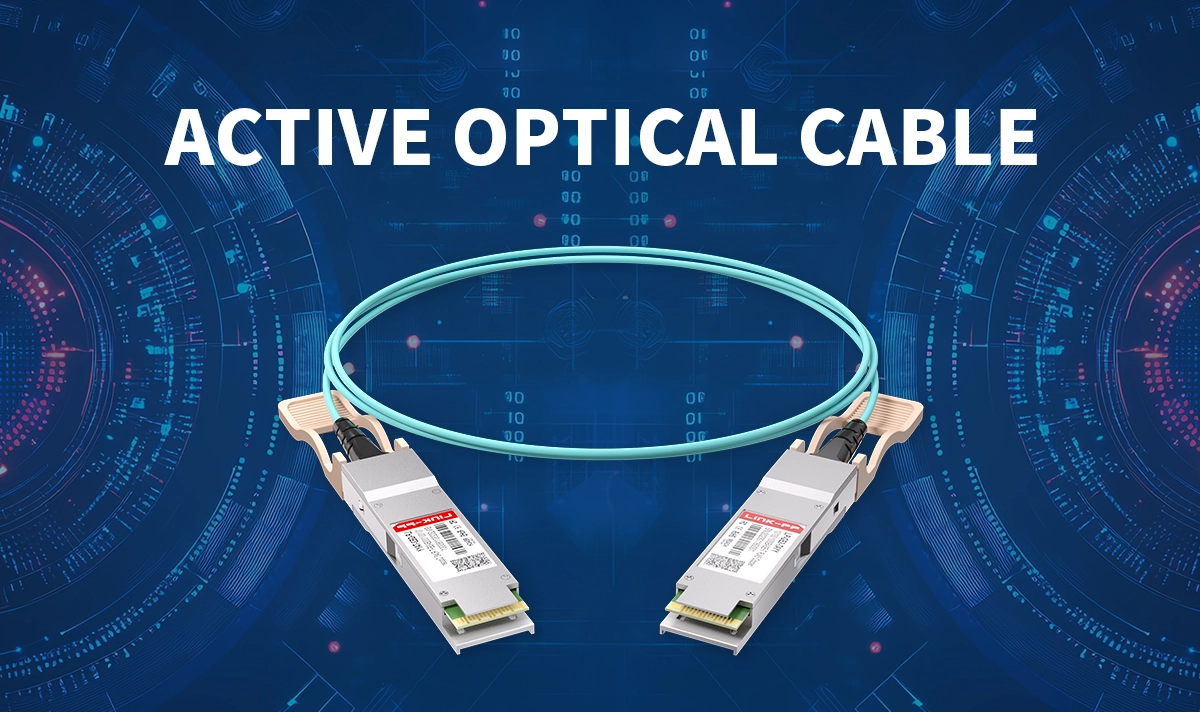
In the relentless pursuit of higher bandwidth and lower latency within data centers, high-performance computing (HPC), and enterprise networks, the physical layer connecting switches, servers, and storage is critical. Two dominant solutions for short-reach interconnects are DACs (Direct Attach Copper Cables) and AOCs (Active Optical Cables). The seemingly simple question "DAC vs AOC?" carries significant weight for infrastructure design, impacting cost, power consumption, performance, and scalability. This guide dives deep into both technologies, empowering you to make the optimal cabling choice.
➤ Key Takeaways
DAC cables have copper inside. They work best for short and fast connections. They can go up to about 10 meters. DAC cables help save money and use less power.
AOC cables have fiber inside. They can reach much farther, up to 100 meters or more. AOC cables do not get bothered by electronic noise.
Use DAC cables for simple and cheap links inside racks. They are good in quiet places where you do not need much flexibility.
Use AOC cables for long-distance links or noisy places. They are good when you want light and bendy cables that keep signals strong.
Knowing your network’s distance, budget, and environment helps you pick the right cable. This helps your data stay fast and reliable.
➤ What is a DAC (Direct Attach Copper Cable)?

A DAC is an integrated assembly featuring fixed copper cable ends terminated with pluggable connectors (like SFP+, QSFP+, QSFP28, QSFP-DD, OSFP). Crucially, the electrical components of a transceiver are embedded directly into the connectors at each end of the cable assembly. There is no standalone optical transceiver module involved.
Core Technology: Relies on copper conductors (typically twinaxial cable).
Signal Transmission: Electrical signals travel directly over the copper wires.
Key Components: Integrated electrical circuitry within the connectors handles signal conditioning and driving.
Passive vs. Active DACs:
Passive DACs: Rely solely on the host device's port to drive the signal. No signal amplification or re-timing. Strictly limited to very short distances (typically ≤3m for 10G/25G, ≤2m for 40G/100G).
Active DACs: Incorporate active electronic components (like amplifiers or re-timers) within the cable connectors. This boosts the signal, enabling longer reaches than passive DACs (e.g., up to 5m, 7m, or even 10m depending on data rate and quality) and improving signal integrity.
➤ What is an AOC (Active Optical Cable)?

An AOC is an integrated assembly featuring fixed fiber optic cable ends terminated with pluggable connectors. Unlike DACs, AOCs incorporate active optical components – essentially miniature optical transceivers – embedded within the connectors at each end. These components perform electrical-to-optical (E/O) and optical-to-electrical (O/E) conversion.
Core Technology: Relies on optical fiber (typically multimode fiber - MMF).
Signal Transmission: Electrical signals from the host are converted to light pulses by the transmitter (E/O conversion). Light travels along the fiber optic cable. The receiver at the other end converts the light pulses back into electrical signals (O/E conversion) for the destination host.
Key Components: Integrated optical engines (VCSEL lasers for Tx, photodiodes for Rx) and driver electronics within the connectors.
➤ DAC vs AOC: Key Differences Head-to-Head
Understanding the fundamental distinctions is crucial for selection:
Feature | DAC (Direct Attach Copper) | AOC (Active Optical Cable) |
|---|---|---|
Core Medium | Copper (Twinax) | Optical Fiber (Multimode) |
Signal Type | Electrical | Optical (Light) |
Transceivers | No - Electronics embedded in connectors | Yes - Miniaturized optics embedded in connectors |
Max Reach | Short (Passive: 1-3m; Active: 5-10m) | Longer (Typically 15m to 100m+) |
Weight | Heavier (Dense Copper) | Lighter (Thin Fiber) |
Bend Radius | Larger (Stiffer Cable) | Smaller (More Flexible) |
EMI/RFI | Susceptible to Electromagnetic Interference | Immune to Electromagnetic Interference |
Power Consumption | Lower (Especially Passive DACs) | Higher (Requires power for laser/driver) |
Cost | Generally Lower (Especially Passive DACs) | Generally Higher |
Heat Generation | Lower | Higher |
Durability | Robust, but susceptible to kinking | Robust fiber, connectors sensitive to dust |
When to Choose DAC (Advantages & Ideal Use Cases)
Cost Sensitivity: DACs, especially passive variants, offer the lowest cost per port for high-speed connections. This is paramount in large-scale, dense deployments like top-of-rack (ToR) switching.
Ultra-Short Distances: For connections within the same rack or between adjacent racks (≤3m for many speeds), passive DACs are often the most economical and simplest solution.
Lower Power Consumption: Passive DACs consume virtually no additional power beyond the host port. Active DACs consume less than equivalent AOCs. This reduces heat load and operational expenditure (OPEX).
Simplicity & Reliability: Fewer components (no lasers/detectors) can translate to high reliability for in-rack links. Plug-and-play simplicity.
High-Density Environments: Thinner DACs (compared to some older fiber cabling) can sometimes aid airflow and cable management in dense racks, though AOCs are generally thinner and more flexible.
When to Choose AOC (Advantages & Ideal Use Cases)
Medium Distances: For connections spanning 5 meters up to 100 meters (or beyond with specific variants), AOCs are the clear winner. DACs simply cannot reach these distances reliably.
Electromagnetic Interference (EMI) Immunity: Critical in environments with heavy machinery, high-power cables, or sensitive equipment where EMI could disrupt electrical signals. AOCs are immune.
Reduced Cable Weight & Bulk: Optical fiber is significantly lighter and thinner than equivalent copper cables carrying high-speed data. This eases cable management, reduces strain on ports, and improves airflow. LINK-PP AOCs are renowned for their flexibility and manageability.
Electrical Isolation: Provides galvanic isolation between devices, protecting equipment from potential ground loops or voltage differences.
Security: Tapping optical signals is significantly harder than tapping electrical signals on copper, offering a marginal physical layer security advantage.
Future-Proofing: While DAC technology pushes limits, AOCs inherently support much longer distances and are often the only viable option for higher speeds (like 200G, 400G, 800G) over anything beyond a few meters.
➤ Making the Right Choice: Factors to Consider
Selecting between DAC and AOC isn't always black and white. Evaluate these factors:
Required Distance: This is often the primary deciding factor. Measure accurately!
Budget: Factor in both upfront cable costs and long-term power/cooling costs (TCO).
Data Rate: Higher speeds (400G, 800G) push the limits of copper; AOCs become necessary sooner for longer reaches. Explore LINK-PP 400G optical modules for cutting-edge solutions.
Power & Cooling Constraints: Data centers with tight power budgets or cooling challenges might lean towards DACs where possible.
EMI Environment: If EMI is a known issue, AOC is the safer choice.
Cable Management & Weight: Consider rack density, airflow, and port strain. AOCs offer advantages here.
Vendor Compatibility & Quality: Choose reputable suppliers like LINK-PP known for reliable, standards-compliant cables. Ensure compatibility with your specific switch and server hardware. Consider high-speed AOC cable reliability a key factor.
➤ Conclusion: The Right Tool for the Job
The "DAC vs AOC" debate resolves not to a winner, but to selecting the optimal tool for your specific requirements. DACs reign supreme for ultra-short, cost-driven connections within racks, offering unbeatable value and simplicity. AOCs unlock the essential capabilities of longer reach, EMI immunity, and reduced bulk/weight for connections beyond the practical limits of copper, especially as speeds escalate to 400G and 800G.
Ready to Optimize Your Data Center Interconnects?
Choosing the right cabling infrastructure is vital for performance, efficiency, and scalability. Whether you need the cost-efficiency of high-quality DACs or the reach and flexibility of reliable AOCs, LINK-PP provides a comprehensive range of standards-compliant solutions, including specific models like the LINK-PP LQ-AOC11100-3M for robust 100G links or the LINK-PP LQ-DAC1125-3M for dense 25G server connections.
For a personalized consultation? Contact LINK-PP's experts now ➙
➤ FAQ
What is the main difference between DAC and AOC cables?
You use DAC cables for short, fast connections. You pick AOC cables when you need to go farther and want to avoid signal problems from electronic noise. DAC uses copper. AOC uses fiber.
Which cable should you choose for a noisy environment?
You should choose AOC cables. They do not get affected by electromagnetic interference (EMI). DAC cables can pick up noise in busy or crowded areas.
Are DAC cables always cheaper than AOC cables?
Yes, DAC cables usually cost less than AOC cables. You save money with DAC for short links. AOC costs more because it uses fiber and has built-in electronics.
Can you use both DAC and AOC cables in the same network?
You can use both types in one network. Use DAC for short, simple links. Use AOC for longer runs or places with lots of electronic noise. This helps you get the best performance.
Do DAC and AOC cables support the same data speeds?
Both DAC and AOC cables support high data speeds, like 10G, 25G, 40G, and 100G. The main difference is that AOC keeps these speeds over longer distances.




